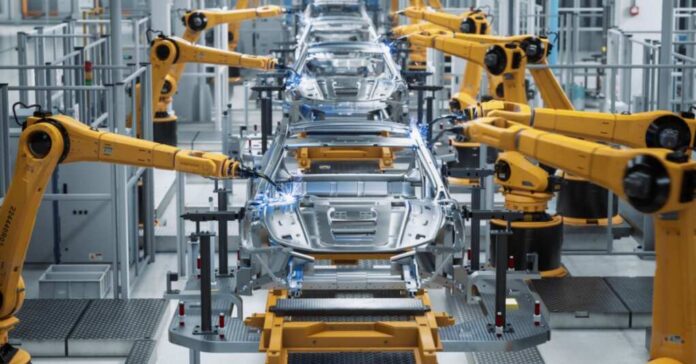The Biden administration just dropped a bombshell on the automotive industry with its latest batch of climate regulations. Cue the dramatic music because, on Wednesday, the Environmental Protection Agency (EPA) rolled out its oh-so-stringent tailpipe pollution limits, heralding what some might call a “revolution” in the fight against climate change.
But hey, while we’re all patting ourselves on the back for saving the planet, let’s not forget about the casualties along the way. Yep, you guessed it—good ol’ Stellantis is feeling the heat, and not in a good way. These regulations are set to cost Americans their jobs faster than you can say “greenwashing.”
Under the new regulations, the administration aims to ensure that by 2032, hybrids and all-electric cars will make up the majority of new vehicle sales.
This ambitious mandate by the Biden Administration, nearly three years in the making, represents a seismic shift in the automotive industry. By imposing such far-reaching requirements, the administration aims to promote electric vehicle adoption and curb greenhouse gas emissions from transportation, a significant contributor to climate change.
The EPA’s regulations envision a staggering scale of transformation. While a record 1.2 million electric vehicles were sold last year, they accounted for just 7.6% of total U.S. car sales. The new regulations aim to dramatically increase this figure, targeting a 56% share of electric vehicles by 2032. Additionally, hybrids are expected to make up an additional 16% of new car sales.
The impact of these regulations is already being felt across the automotive industry. Stellantis, which manufactures several brands, including Chrysler, Dodge, Jeep, Ram, and Fiat, is one of America’s largest automakers. Stellantis has announced that it is planning to cut around 400 positions. The company faces formidable challenges in transitioning to electric vehicle (EV) production, and the decision comes against mounting pressures within the automotive industry as it navigates the shifting landscape toward sustainable mobility solutions.
Effective March 31, the layoffs primarily target white-collar roles at the company’s headquarters and a chemical center in Auburn Hills, Michigan. Stellantis has disclosed that these roles cover a range of areas, such as engineering, technology, and software development. This strategic restructuring underscores the company’s concerted efforts to realign resources and streamline operations in response to evolving market dynamics.
Stellantis, aware of the significance of this decision, emphasized its commitment to safeguarding essential competencies for maintaining a competitive edge. The restructuring measures are integral to optimizing the company’s cost structure while reinforcing its strategic imperatives, notably its ambitious EV product roadmap and the Dare Forward 2030 initiative.
Although regrettable, the announced layoffs signify a prudent adjustment, representing only a fraction, approximately 2%, of the company’s workforce. Stellantis reaffirmed its long-term vision, stating that by 2030, it will sell 50% of electric vehicles in the United States and 100% in Europe.
Carlos Tavares, Stellantis’ CEO, has admitted that electric vehicles (EVs) are currently much more expensive to produce than traditional vehicles. In fact, he estimates that there is a cost differential of about 40%. However, the company is determined to find ways to reduce production costs and narrow this gap, even as it prepares to launch an impressive lineup of 18 new EV models this year.
Although Stellantis has made significant progress in this area, it acknowledges that pricing remains a challenge and that EV costs have not yet reached their ideal targets.
This announcement follows Stellantis’ disclosure in December, hinting at the potential for substantial workforce reductions across facilities in Detroit and Ohio. These adjustments are part of Stellantis’ broader strategy to align production operations with evolving regulatory frameworks, particularly in regions like California, where stringent emissions standards necessitate a swift transition to EV manufacturing.
It is likely that more car manufacturers will lay off employees in the near future to cover the production cost difference between Electric Vehicles (EVs) and gasoline vehicles. The Biden administration’s efforts to implement strict emissions regulations, combined with California’s mandates, have accelerated the industry’s transition towards electrification and consequentially, more jobs will be lost.



















